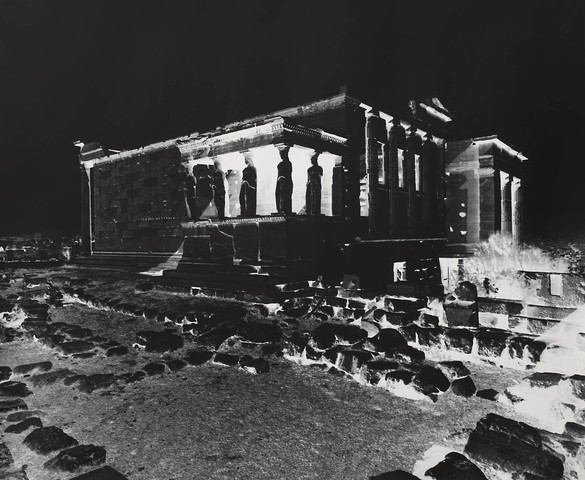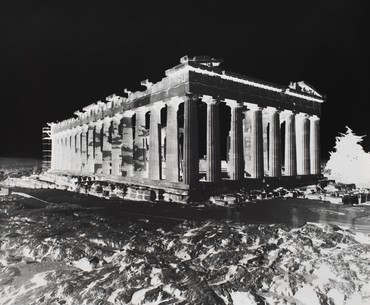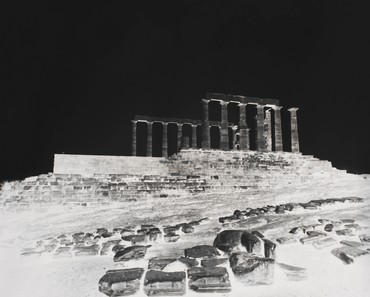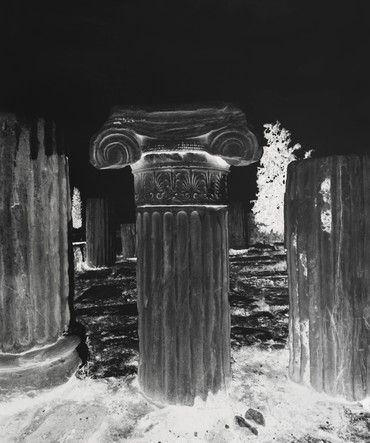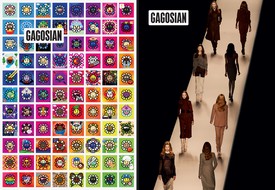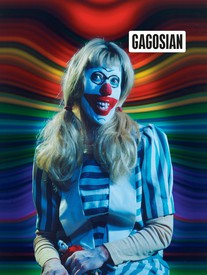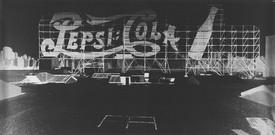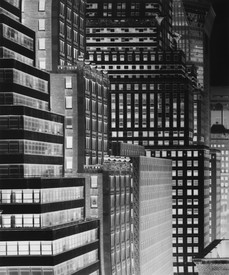
Jean Dykstra is a photography critic and the editor of Photograph magazine. She has contributed to the Brooklyn Rail, Art in America, and Broadcast, Pioneer Works’ online magazine, among other publications. She has contributed essays to many books, exhibition catalogues, and monographs.
Late in the summer of 2021, Vera Lutter received a call from the New York Times. Kathy Ryan, the longtime director of photography for the newspaper’s Sunday magazine, wanted to send Lutter to Athens to take photographs for an article called “Searching for Plato with My 7-Year-Old.” In the essay, Thomas Chatterton Williams wrote about passing on lessons he had learned from his own father to his seven-year-old daughter on a family trip to Athens, lessons that included an (age-appropriate) introduction to the philosophical underpinnings of Western thought developed by Socrates and Plato. Sitting among the rocks and columns of the city’s Agora, Williams wrote about feeling a shiver down his spine as he contemplated his surroundings, the place where so much of Western philosophy and wisdom were debated and developed. “An overwhelming proportion of the world we take for granted today was birthed in these cramped spaces,” he wrote.
For Lutter, who had never accepted an editorial commission before, the invitation was timely. Her father had died recently and she had spent the summer taking care of his affairs in Germany, which was experiencing record rainfalls and flooding; so it had been something of a “lost and sad summer,” as she describes it, when she got the call from the Times. Athens, by contrast, was hot and dry, with a temperature hovering around 110 and fierce winds, the meltemi, blowing across the Aegean Sea, fueling the wildfires that plagued the country that summer. The paper’s deadline necessitated a far tighter schedule than Lutter normally works on, but the opportunity to photograph Athens’s ancient structures and monuments “went right to the core of my heart,” she says. So she contacted her assistant, Lukas Vogt, and left a rain-soaked Germany for a sun-blasted Greece to photograph the Parthenon, the Erechtheion, the site of Plato’s Academy, and, some forty miles south of Athens, the Temple of Poseidon at Cape Sounion.
I was interested in the fragmented body, the rupture between the once perfect antiquity and what we see today.
Vera Lutter
Lutter was able to get access to the Acropolis early in the morning, when steam rose off the rocks, rosemary and thyme scented the air, and the city of Athens slept at her feet. At the Temple of Athena, built in the sixth century BC to honor the goddess of war and guardian of the city, the sacredness of the site was palpable. As Williams wrote in his text, “I had wanted to impress upon my daughter the feminist aspect of Athens, a city brought to life by the mythological victory of Athena, goddess of wisdom and strategic warfare, over Poseidon, ruler of the sea.” Lutter makes images using camera obscuras, in which the image appears upside down and tonally reversed, with light appearing dark and vice versa; in printing them, she flips the image vertically but does not correct the tonal inversion. In her Athens photographs, then, the Temple of Athena stands not against the bright blue of a daytime sky but against an impenetrable black, while the dark shadows that pool where the columns meet the structure’s horizontal beam (the architrave) glow like a row of lights. A tree on the right of the image seems almost to explode with light, and several columns are dappled with shadows. The quiet stillness of the image allows us to take in the details carved into the columns, the surrounding rock out of which the temple was carved, and a glimpse of the city, in miniature below the hill. The dark sky—darker than it ever is in reality—gives the sense that Lutter snuck onto the site under cover of night. Her photographs of these ancient structures, fragments of what they once were, convey a sense of awe, in all of the word’s meanings: astonishment, wonder, trepidation, reverence.
All of this was summoned using the most rudimentary camera, a light-tight box with a fixed pinhole that lets in a narrow beam of light. That light then casts an image onto the back of the box, which Lutter lined with light-sensitive photographic paper. It should be said, though, that Lutter’s process is anything but rudimentary. She’s developed a method for determining the timing of her long, slow exposures that involves pages and pages of numbers and calculations, including, in the case of the Athens images, elevation charts, bird’s-eye views of the sites that she researched online, the timing of the sunrise and sunset, and the path of the wind. All of which allowed her to have a fair idea of how the image would imprint itself—upside down, left and right flipped, and tonally reversed—in her camera.
When Lutter first moved to New York, in 1993, she turned her midtown apartment into a camera obscura. Since then she has photographed urban structures, industrial sites, landscapes, airports, museums, and other subjects using various camera obscuras, some as small as a suitcase, others as large as a shipping container. In some ways, though, ancient monuments—the Temple of Athena in Paestum, the Pyramids of Giza, and more recently the Acropolis, Plato’s Academy, and the Temple of Poseidon—seem especially suited to her practice. Excepting the lucky few (relatively speaking) who have been to Athens and visited the Acropolis, most of us experience these monuments, so crucial to Western mythology and history, at a remove. In the pages of an art-history book, say, they feel familiar, unsurprising. In person, though, “There’s just such overwhelming beauty and majesty and scale,” observes Lutter, adding, “I was always marveling at what moved the people of that time to build these structures.” That sense of beauty and majesty radiates from her photographs of the Acropolis and the Temple of Poseidon, releasing a kind of collective memory of the stories that originated there, the mythological battles, the philosophical debates.
The camera obscura dates back to at least 400 BC, and it’s suggested that Aristotle, appropriately enough, figured out how to view a solar eclipse safely using a camera obscura–like instrument. The mechanism has been used by artists since at least the fifteenth century, when Leonardo da Vinci described it in his Codex Atlanticus, and artists have long used it as a technical aide for painting and drawing. But while Renaissance painters used the camera obscura to transfer and trace the scene in front of them onto a canvas with accuracy and verisimilitude, Lutter uses it to create images that transform their original subjects. Her photographs radically revise their subjects, allowing us to look differently at scenes and objects we think we know. “In early photography the artists looked for an equal image reproduction of an object,” she told Los Angeles County Museum of Art director Michael Govan in an interview, “whereas I look for a transposition or, as you said, transformation.”
Lutter’s works rest at the opposite end of the photographic spectrum from, say, Henri Cartier-Bresson’s decisive moment. They have an entirely different relationship to time, capturing, instead, the slow accumulation of many moments. One consequence of her process is that while people may have wandered in front of her camera obscura—and in the case of the photographs in Athens, they almost certainly did—there is no evidence of them in the images. Not only does the site appear empty, as if it’s only just been discovered, there are no indicators of contemporary life—no tourists in shorts and sneakers, no backpacks or sunhats. It’s as if the images themselves were relics from another era. Lutter’s pictures upend photography’s relationship to truthfulness—they’re more interpretive, more revelatory and open-ended—and also our way of looking, demanding more of our time and attention. The tonal inversion that characterizes the negative image is initially disorienting, and the slow and patient manner of looking they require is at odds with the pace at which we swipe through images every day on our phones—or the way we rush past the works in a museum, for that matter. “Much of my response to a work is intuitive,” Lutter says. “The image that I eventually make is like a union of the original and of what I hoped to further find and bring forward. Once such a work of mine is presented to the public, it meets the memory and the imagination of the viewer and a new dialogue starts.”
Creating a dialogue rather than a document: that is what Lutter has been doing with her photographs for the last twenty-five years. Even the most humble of the sites she photographed in Athens is an invitation. In contrast to the photographs of the Acropolis, which rises up on the hilltop above the city, her photograph of the steps of Plato’s Academy shows an uneven, corroded set of stairs surrounded by a ghostly tangle of leaves and branches. What’s left of the Academy is in a public park in Athens, and the staircase leads down to a lower level of the park, where additional excavation has been done. The photograph shows steps carved into the rock, nothing more, but they welcome us into Plato’s world, asking us to imagine not only what might have been there but what might have taken place there, the ideas that were shaped in conversation.
This is not the first time Lutter has photographed ancient ruins, nor the first time the characters of history or classical mythology have found their way into her work. In 2012 and 2013, she photographed in the Greek and Roman wing of New York’s Metropolitan Museum of Art, focusing on individual sculptures—a marble torso of Apollo, a statue of a gowned woman, sculptures of Pan—as well as vitrines filled with smaller figurative sculptures or vessels. Lutter made three photographs of a marble statue of Pan from around the first century AD, showing a shaggy-haired, bearded figure standing on hooved feet—half goat, half man—that seems to float against an empty, horizonless background. The three images were made using different exposure times, so that the fertility deity and protector of shepherds and flocks seems to emerge slowly into being from picture to picture (or to evaporate into the ether, depending on the order in which you view them). She photographed another Pan sculpture from below, looking up, emphasizing his muscular torso while his hooved legs dematerialize mid-transformation. Pan is a slippery character, associated with metamorphosis, among other things, and in that sense, a good symbol for Lutter herself, whose transformative powers are evident in these images.
Lutter’s camera obscura is a singular way of making a picture, but it also represents a way of looking—one characterized by patient and prolonged attention. Take, for example, Vitrine, June 17, 2013. We see some twenty small figurative sculptures on plinths inside a glass case. A series of labels, in small type, tracks along the bottom of the vitrine. The glass front of the case has captured the reflections of the room behind it, so we see four patterned window grates suspended brightly in the image’s upper left, and the columns of the gallery behind the camera. The multiple reflections caught in the glass give what is actually a shallow vitrine the feel of an endlessly vast space. Out of that space emerges the beautifully carved, glowing figure of a boy—headless, like most of the other figures in the case. He is carved out of basalt, a hard, black, volcanic rock, rather than marble, and because of the tonal reversal of Lutter’s prints, the figure appears illuminated, and suspended in midair, like a spirit. In the same way that the boy’s figure in the photograph slowly, over time, absorbed the light in her camera obscura, our attention comes to rest on his figure, and everything else in the image fades in significance. “I was interested in the fragmented body, the rupture between the once perfect antiquity and what we see today,” Lutter told Michael Govan. It’s that rupture that animates the viewer’s imagination, that engages the viewer in dialogue with Lutter’s remarkable images.
Artwork © Vera Lutter
Vera Lutter: Fragments of the Past, Gagosian, Athens, April 7–May 28, 2022
